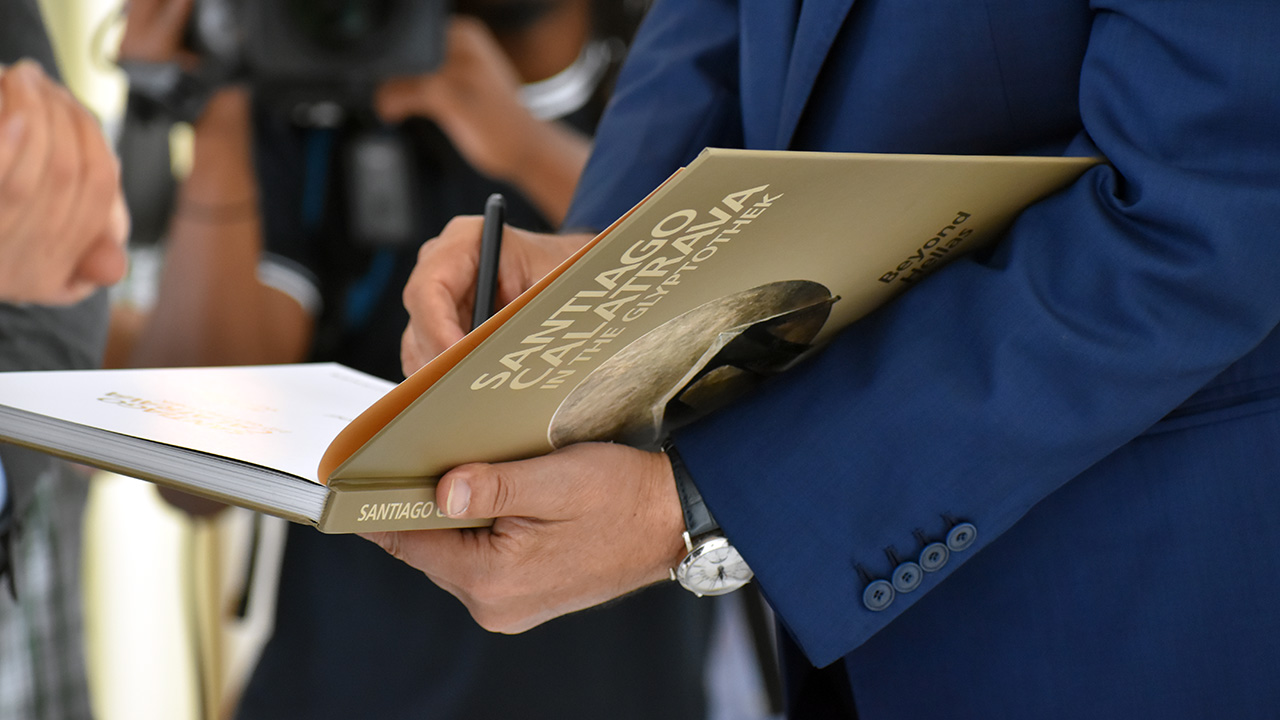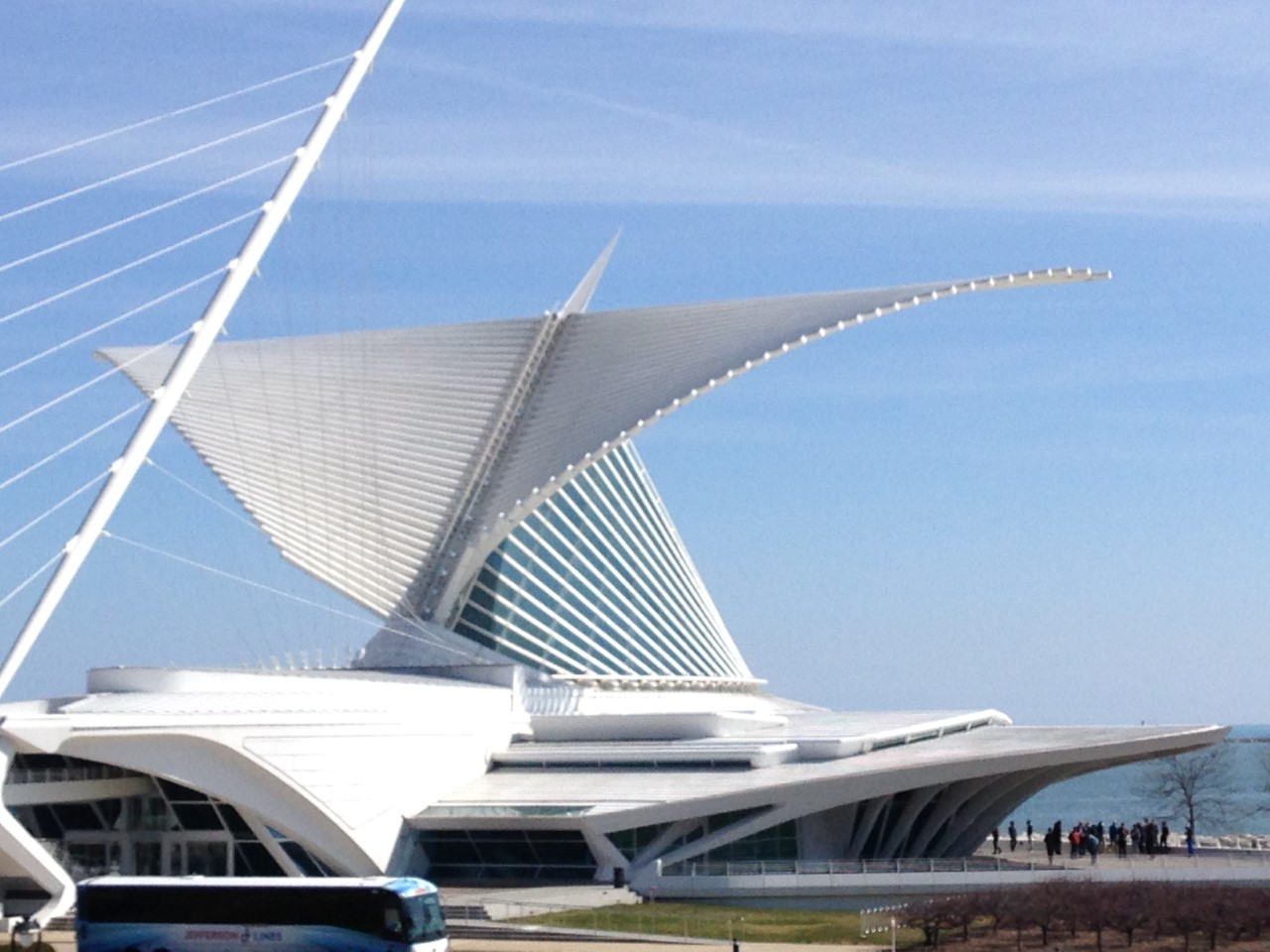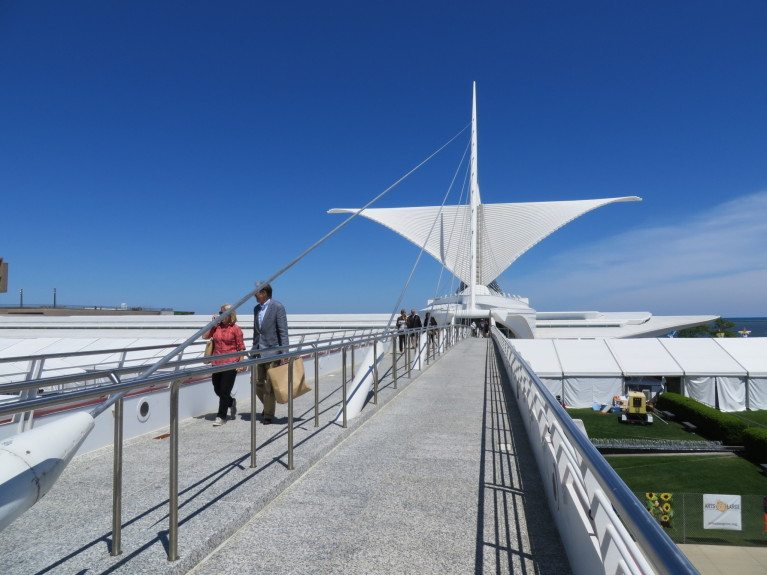Spanish architect Santiago Calatrava returned to Milwaukee this week, two decades since the opening of his first U.S. project: the Quadracci Pavilion at the Milwaukee Art Museum.
The 142,050-square-foot iconic sculptural addition was completed in 2001 and has since garnered national and international awards and become a major landmark and point of pride for the city of Milwaukee. Calatrava’s visit marked the culmination of a year’s long celebration of the building’s 20th anniversary.
“The 20th anniversary is truly an opportunity to reflect on what this building has meant to the Milwaukee Art Museum, to our community and to the country at large. … The building has elevated our purpose as the Milwaukee Art Museum and created a truly iconic structure that matches the iconic nature of this institution. It has also elevated the stature of Milwaukee and our community at large over the last 20 years,” said Marcelle Polednik, the Donna and Donald Baumgartner director of the Milwaukee Art Museum.
Polednik on Wednesday was joined by Milwaukee County Executive David Crowley and Mayor Cavalier Johnson at a press conference to recognize Calatrava’s architectural contribution to the city. Johnson declared Friday, Sept. 16, 2022, as “Santiago Calatrava Day” throughout the city.
Taking the podium, Calatrava said he was speechless and was overcome with emotion as he spoke about how he and his family immediately felt welcomed and accepted by the American people, which led them to establish a more permanent residence here after the MAM addition opened. Today, he and his wife, Robertina – who joined him on his visit to Milwaukee – have a home in New York City. They have four adult sons.
“If I will cap some of the essence of this experience, it is a few times in your life that you arrive at a place, recognize the extraordinary, human qualities of the people and then decide to change countries. We came to live in the United States. … The consequence of that is we have four grandsons (who are) American,” said Calatrava.
Walking into the museum 21 years later felt like opening day, he added.
“It’s so well preserved, so beautifully preserved, so much care, and that is very important. It means respect to the work and respect to all the people working here.”
Polednik later said Calatrava’s remark on preservation was the most important thing she could hear as the museum’s director. The building itself is MAM’s largest work of art and it’s given the “same attention and same concern as we do to every other object in our collection,” she said.
Calatrava also acknowledged fellow architect David Kahler, who worked alongside Calatrava throughout the project. Kahler designed the art museum’s 1975 building addition.
Three years after completing the Quadracci Pavilion, Calatrava was contracted to design the new rail station on the former site of the World Trade Center in New York City. He had plans to build the Chicago Spire, a 2,000-foot residential building, but that project never took off.
As visually striking today as it was in 2001, MAM’s wing-like Burke Brise Soleil sculpture stands as a revitalization symbol of one of the region’s many beloved cultural attractions and a testament to the philanthropic community successfully rallying behind an ambitious project. Originally planned as a modest addition, the project swelled in size to become a much higher-profile, $125 million undertaking and was supported by a large capital campaign. Quad/Graphics Inc. founders Harry and Elizabeth Quadracci in 1997 issued the lead $10 million gift to fund the Milwaukee Art Museum addition.
“Back in 1994 when we began this process, we thought that we would be getting a beautiful building and, at the end of the day, what we received as a gift from Mr. Calatrava was a sense of destiny, a sense of purpose, a sense of hope and aspiration for our community,” said Polednik
As part of “Santiago Calatrava Day,” MAM is offering free admission to all visitors on Friday, Sept. 16.
















